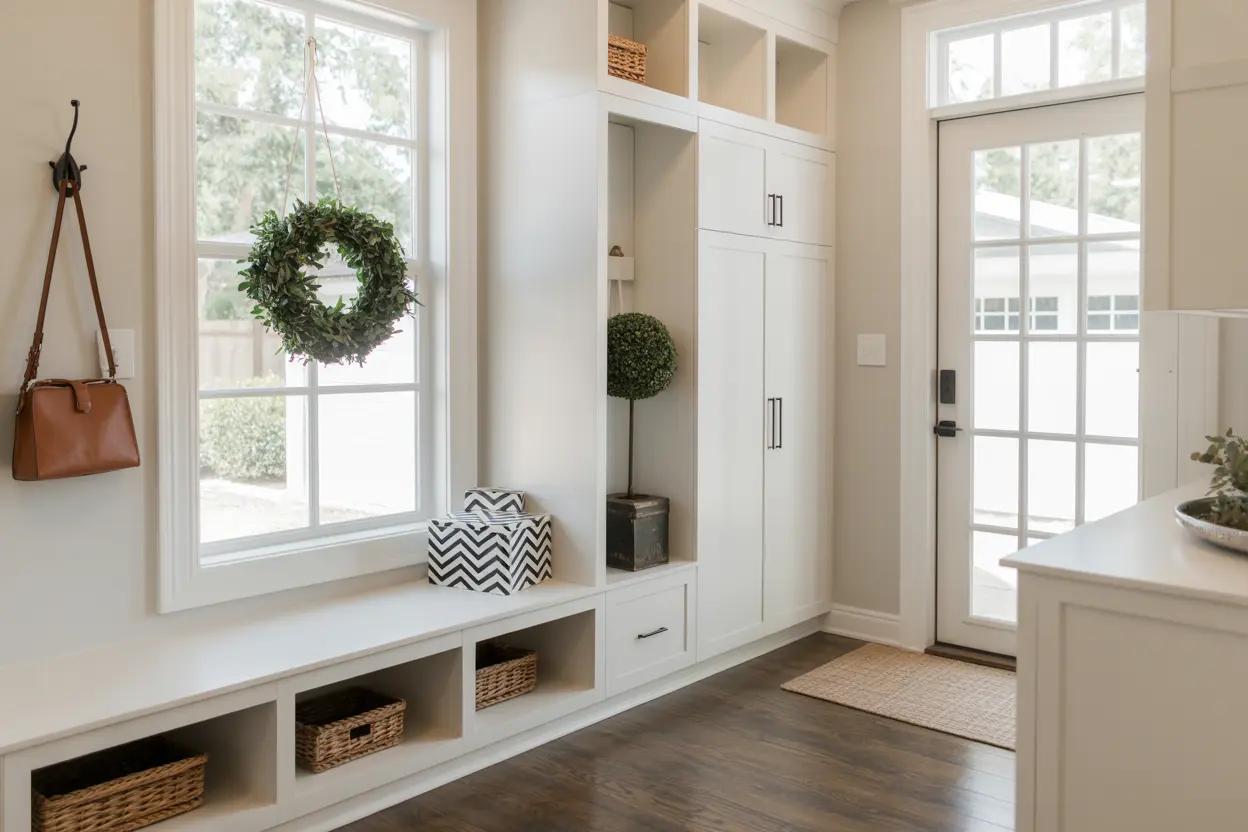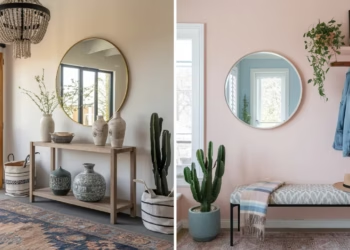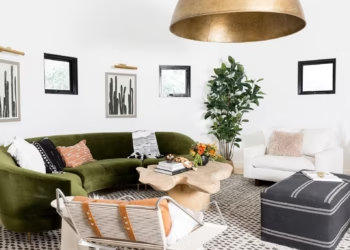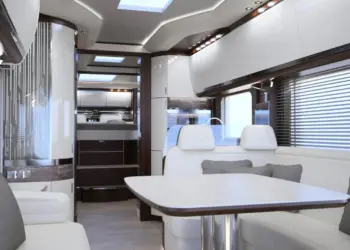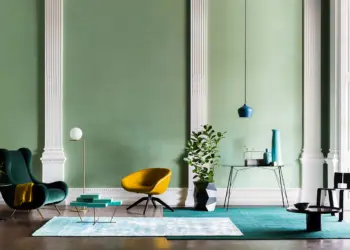Mudrooms may not be the first thing that comes to mind when you think of interior design, but these humble spaces serve a crucial purpose in your home. They are the unsung heroes, keeping dirt, clutter, and the chaos of the outside world at bay. In this comprehensive guide, we’ll explore everything you need to know about mudroom, from their benefits to creative design ideas.
Table of Contents
What Is a Mudroom?
A mudroom is a transitional space, typically located near the entryway of a home, where you can shed your outdoor layers and gear before entering the main living areas. It’s a buffer zone that prevents dirt, mud, snow, and clutter from spreading throughout your home.
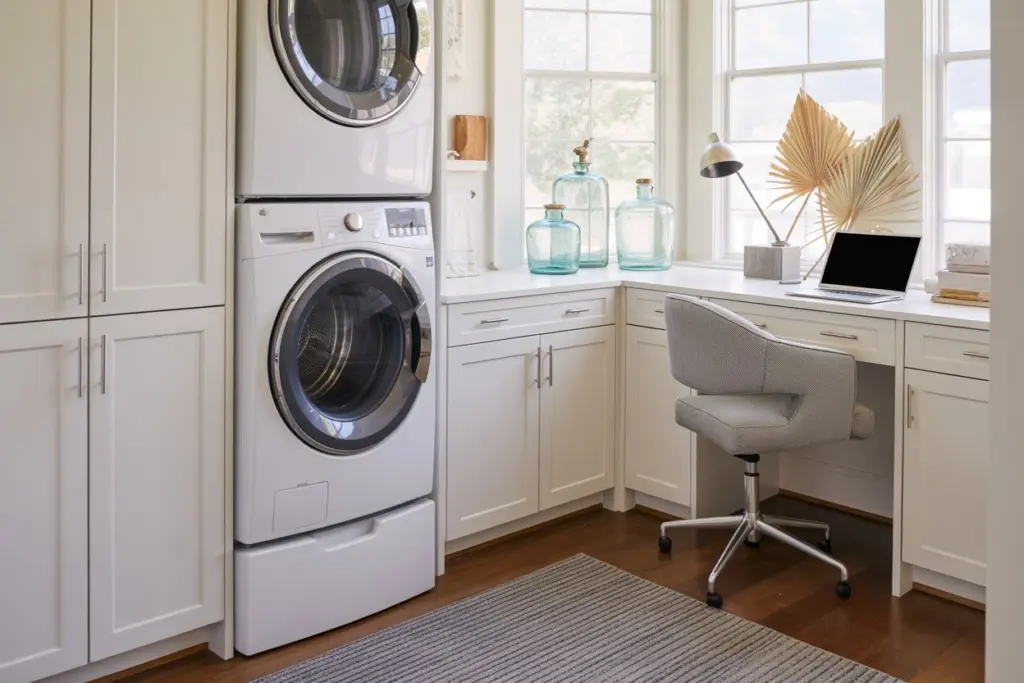
The Benefits of Having a Mudroom
1. Organization
A well-designed mudroom offers a designated place for everything, from shoes and coats to backpacks and sports equipment. This organization saves you time searching for misplaced items.
2. Cleanliness
By containing the mess at the entrance, mudrooms keep the rest of your home cleaner. Say goodbye to muddy footprints and wet floors!
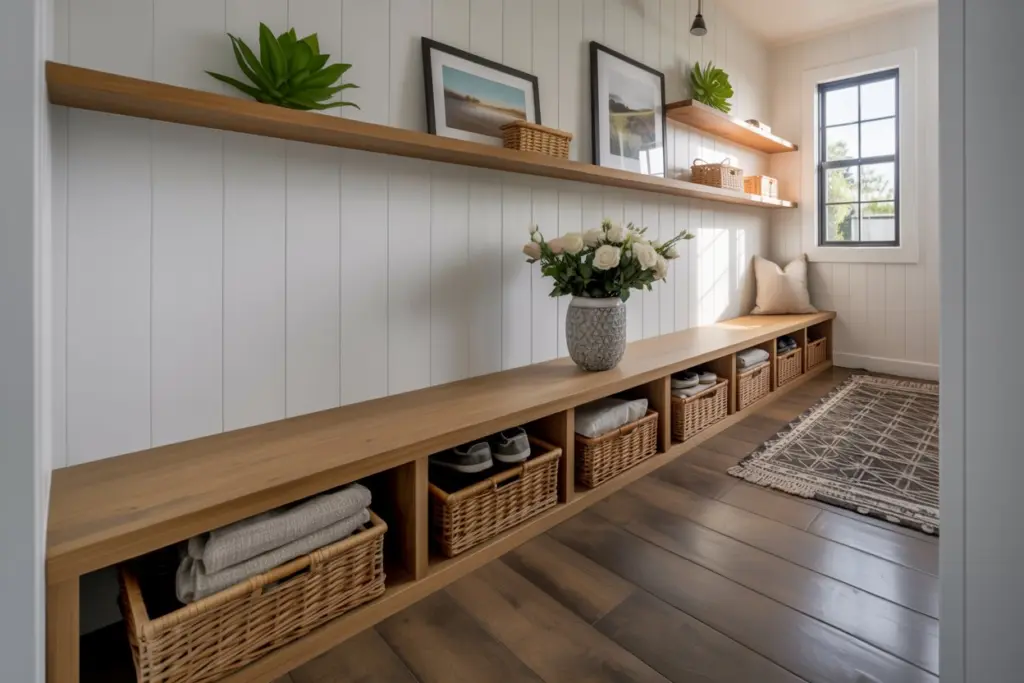
3. Storage Space
Mudrooms provide ample storage options, reducing clutter in other areas of your home. You can have shelves, hooks, cabinets, and more.
4. Versatility
These spaces are versatile and can serve various functions, such as a laundry room, pet care station, or even a mini home office.
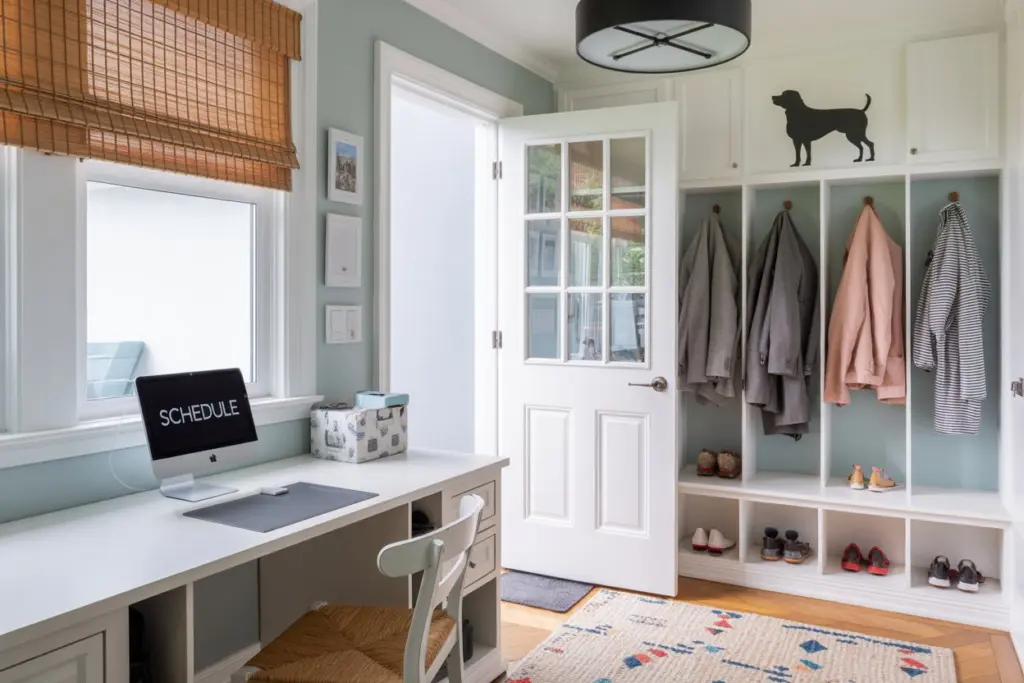
Mudroom Layout Ideas: Crafting the Perfect Entryway
A mudroom is essentially the gateway to your home, where you transition from the outside world to the cozy interior. It’s a buffer zone that allows you to shed your outdoor gear and maintain a clutter-free home. To achieve this, having an efficient mudroom layout is key.
Functional Zones
To make the most of your mudroom, consider creating distinct functional zones. Each zone serves a specific purpose, contributing to the overall organization of the space. Some common functional zones include:
- Storage Zone: This area is dedicated to coats, jackets, and other outerwear. Hooks, hangers, and a coat closet can help keep this zone tidy.
- Drop Zone: Here, you can place items like keys, mail, and bags. A small table or wall-mounted shelves work well for this purpose.
- Utility Zone: If your mudroom serves as a laundry room, include a washer and dryer here. You can also add a sink for easy clean-up.
- Pet Zone: For pet owners, a designated area for pet supplies, like leashes and food bowls, can be a lifesaver.
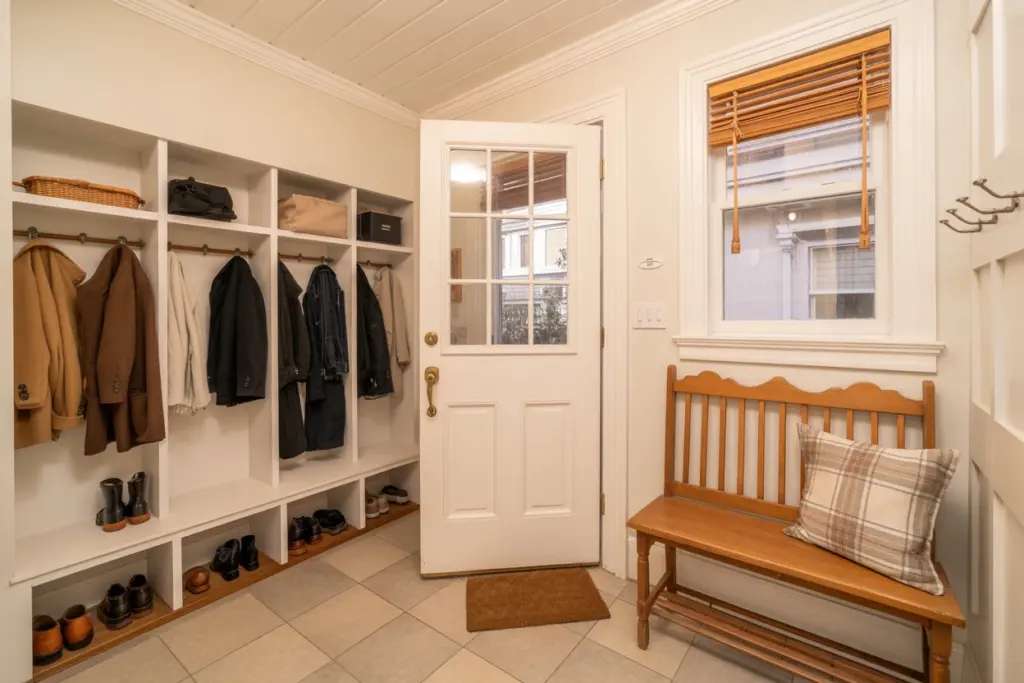
Storage Solutions
A well-organized mudroom relies on ample storage. Consider the following storage options:
- Cabinets and Cubbies: Closed cabinets hide clutter, while open cubbies provide easy access to frequently used items.
- Shelves and Hooks: Wall-mounted shelves and hooks are perfect for hats, bags, and decorative items.
- Baskets and Bins: Use baskets and bins to corral smaller items, like gloves and scarves.

Layout Styles
When planning your mudroom layout, you have two main styles to choose from:
- Open Layout: An open layout offers a spacious feel, making it easy to move around. It’s great for large families and those who want a more welcoming atmosphere.
- Closed Layout: A closed layout includes cabinets and doors to conceal clutter. It’s ideal for those who prefer a tidier look and have limited space.
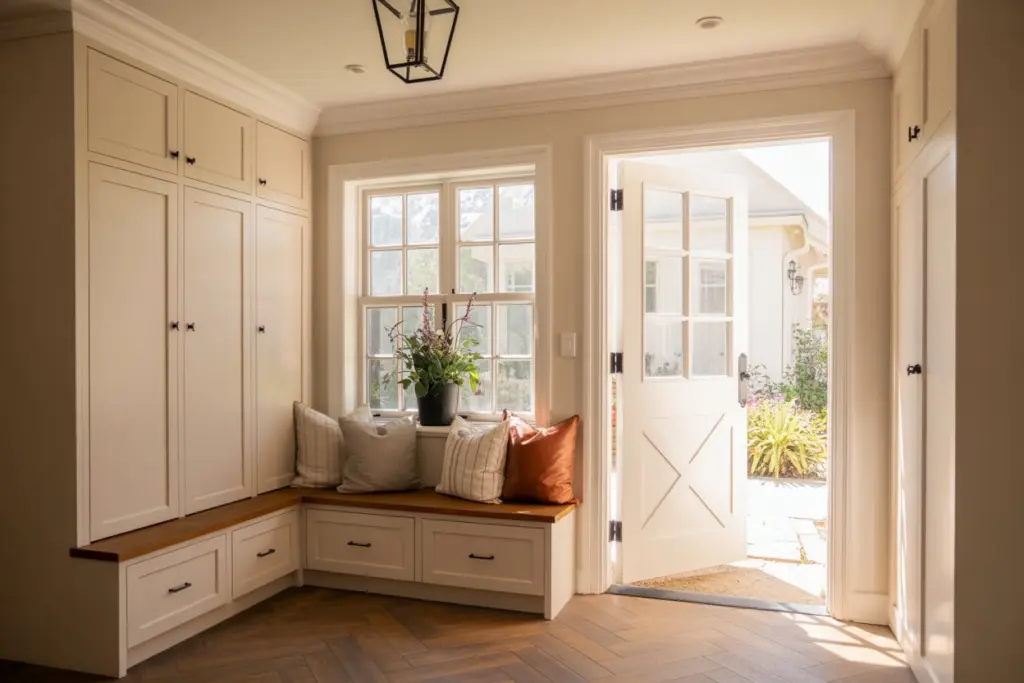
Mudroom Layout Ideas
Here are some layout ideas to consider:
- L-Shaped Layout: This layout provides an efficient use of corner space. It’s great for maximizing storage and creating a cozy nook.
- U-Shaped Layout: Ideal for larger mudrooms, this layout surrounds you with storage, creating a practical flow.
- Straight-Line Layout: Perfect for narrow mudrooms, this layout utilizes one wall for storage and leaves room for traffic.
- Corner Mudroom Layout: Utilize a corner of your home to create a compact mudroom with a welcoming feel.
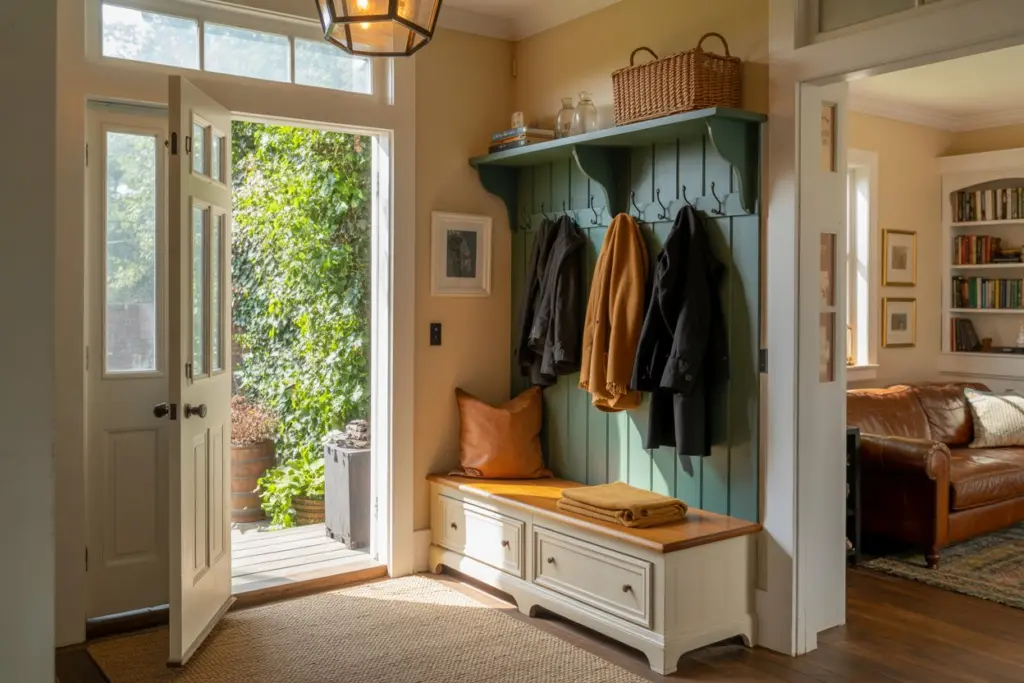
Flooring and Material Choices
For flooring, opt for materials that can withstand moisture and dirt. Durable options include tile, vinyl, or even sealed concrete. As for furniture and cabinetry, choose materials that are easy to clean and maintain.
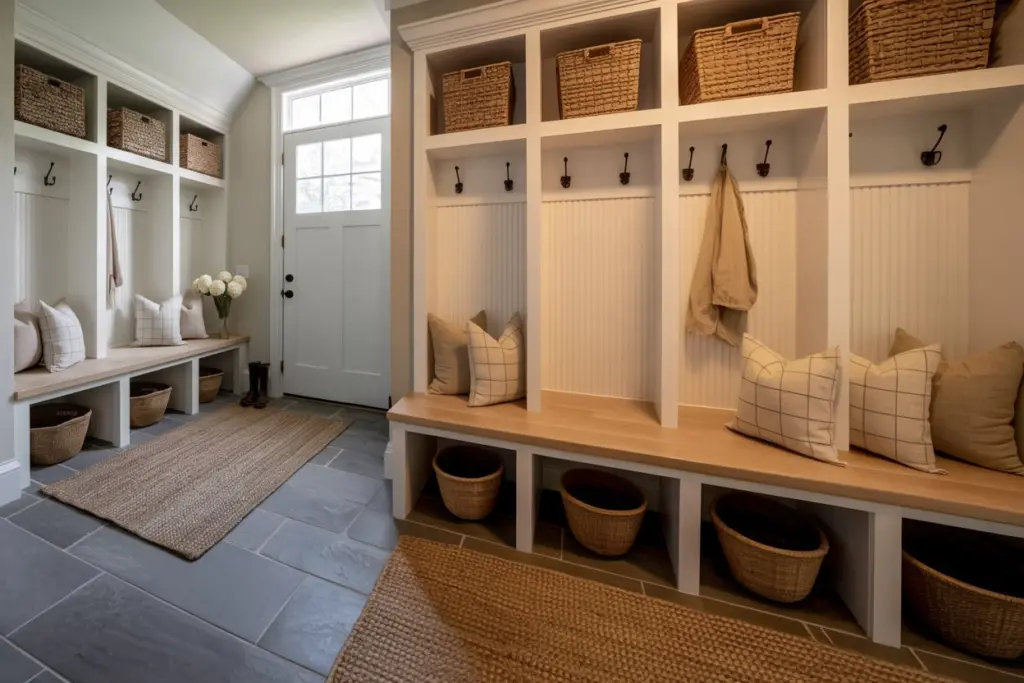
Lighting
Good lighting is essential in a mudroom. Consider overhead fixtures like pendant lights or flush-mount ceiling lights. Wall sconces or task lighting near mirrors can provide additional illumination.
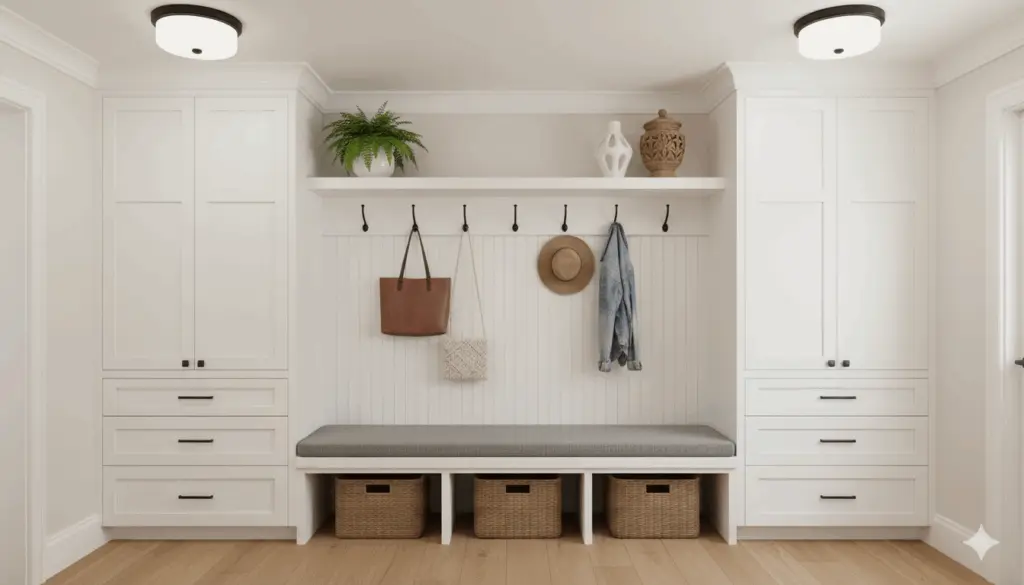
Personalization and Decor
Don’t forget to add your personal touch to the mudroom. You can do this through decorative items, like artwork, rugs, and cushions. Incorporate your favorite colors and design elements to make the space feel inviting.
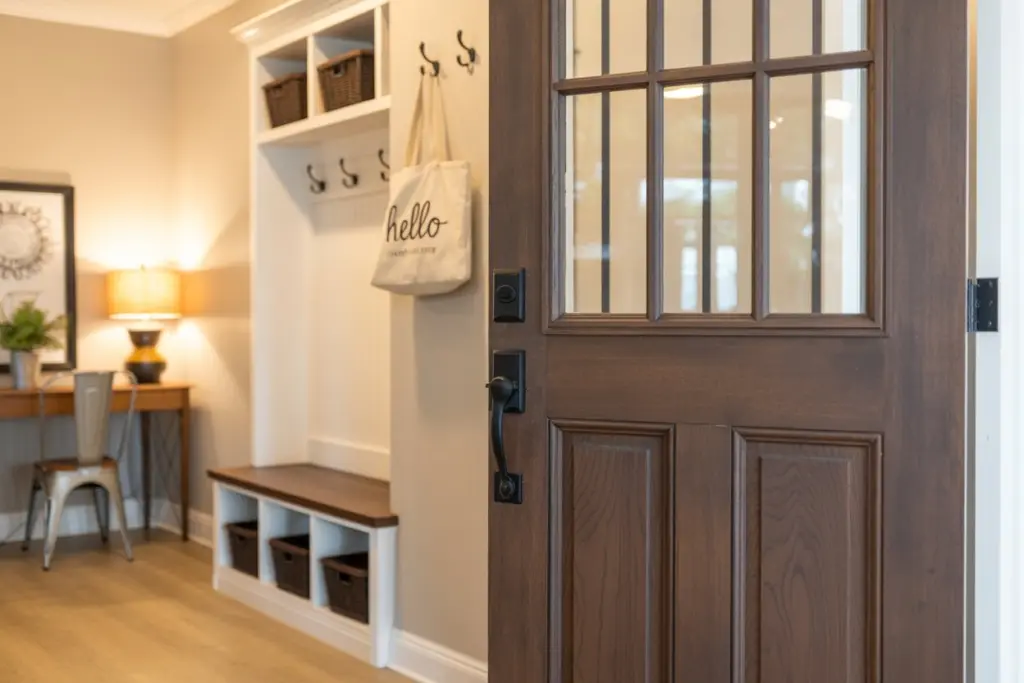
Essential Elements of a Mudroom
Now that you understand the importance of mudrooms let’s delve into the essential elements that make up a functional mudroom:
Mudroom Design Ideas
1. Entryway Bench and Hooks
A bench with hooks or a built-in seat provides a spot for removing and storing shoes, backpacks, and coats. It’s a practical and inviting entry point.
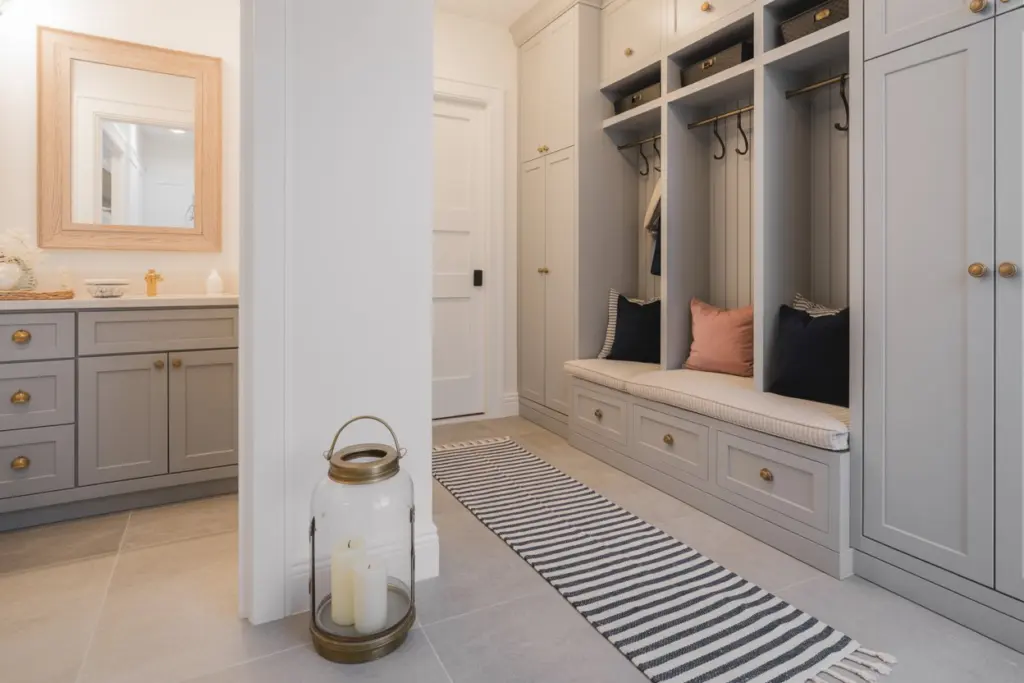
2. Shoe Storage Solutions
Consider cubbies, shelves, or even pull-out drawers for shoe storage. Keep your footwear tidy and easily accessible.
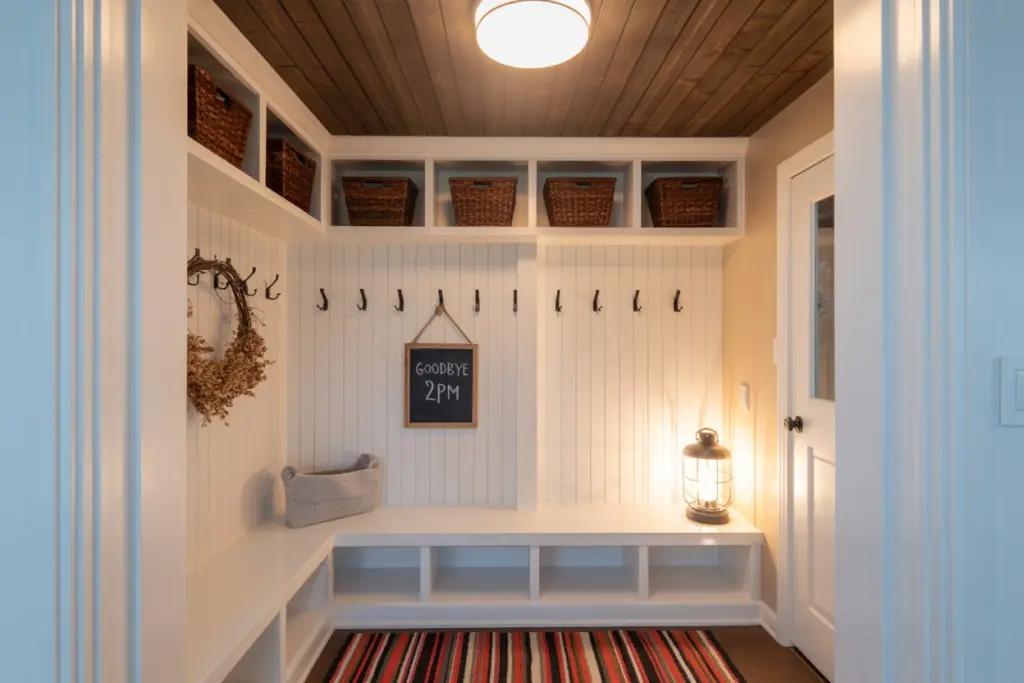
3. Built-in Cubbies and Shelves
Custom-built cubbies and shelves maximize storage and help keep the space organized. Assign cubbies to family members for a personalized touch.
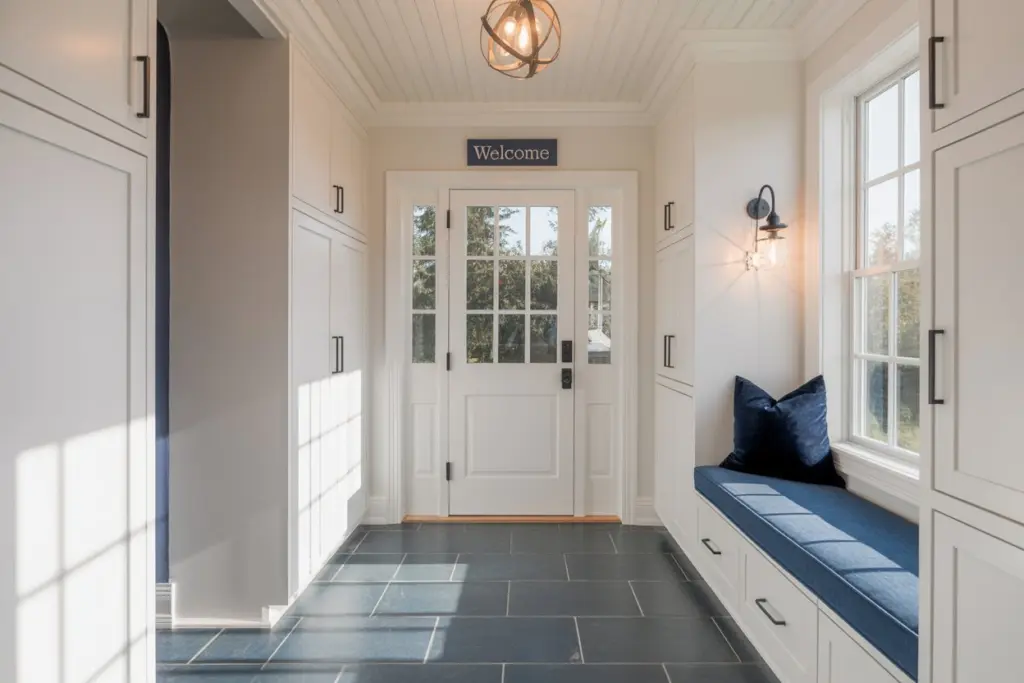
4. Durable Flooring Options
Choose flooring that can withstand heavy foot traffic and is easy to clean. Tiles, vinyl, or durable hardwood are great options.
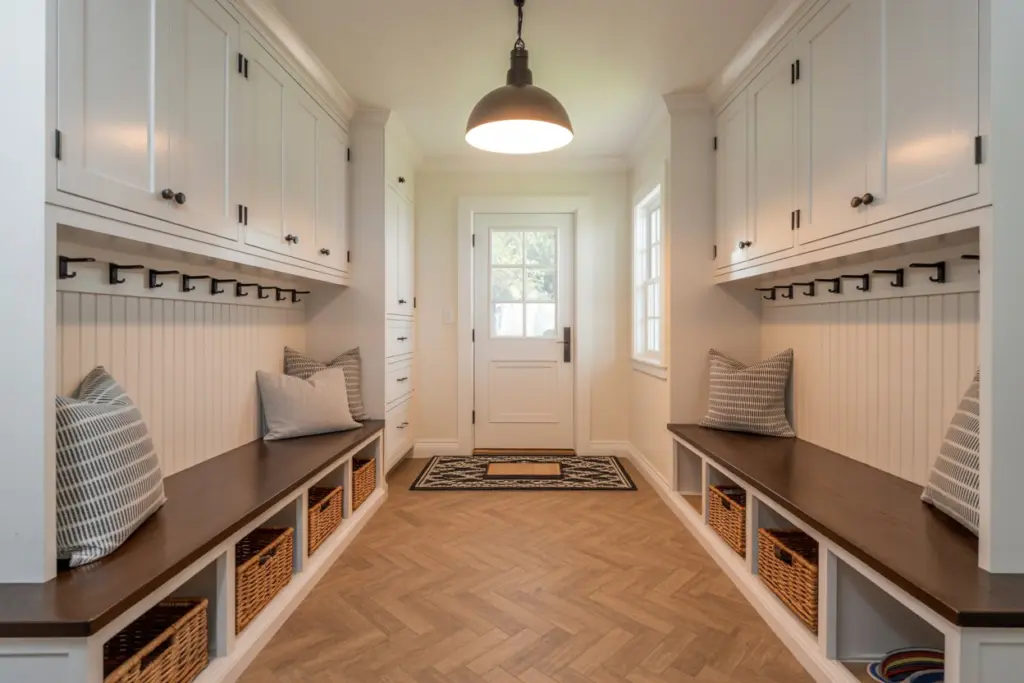
5. Weather-Resistant Rugs
Add weather-resistant rugs to trap dirt and moisture. They’re easy to clean and enhance the mudroom’s decor.
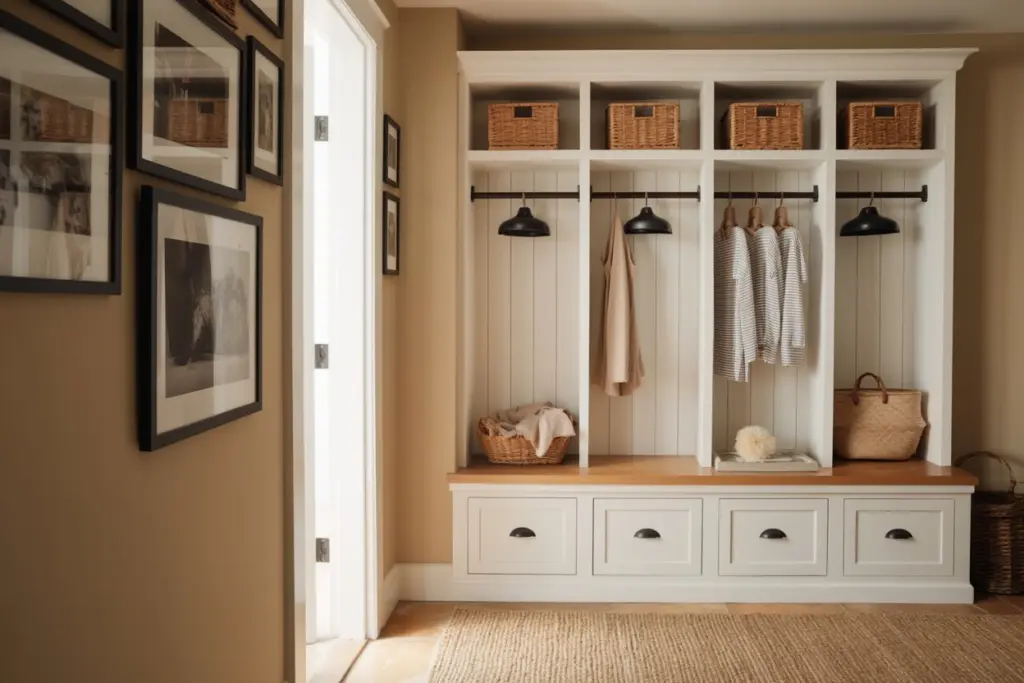
6. Ample Lighting
Good lighting is essential in a mudroom. Install overhead fixtures and task lighting to ensure visibility, especially during dark mornings or evenings.
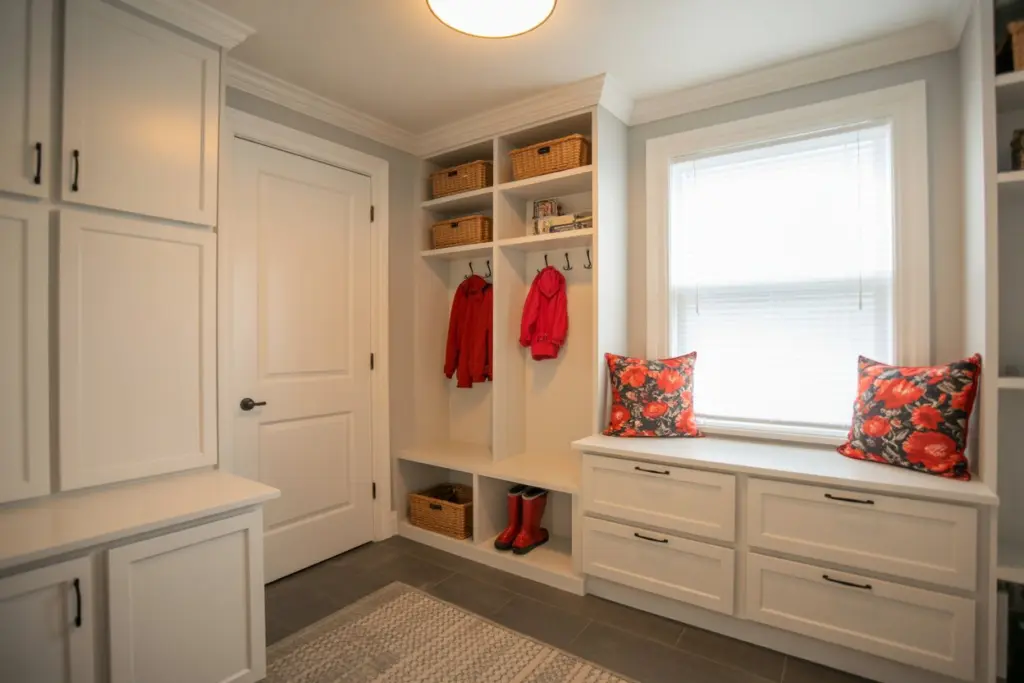
7. Stylish Decor and Organization
Incorporate stylish decor elements like mirrors, artwork, and baskets for a welcoming look. These elements can also help with organization.
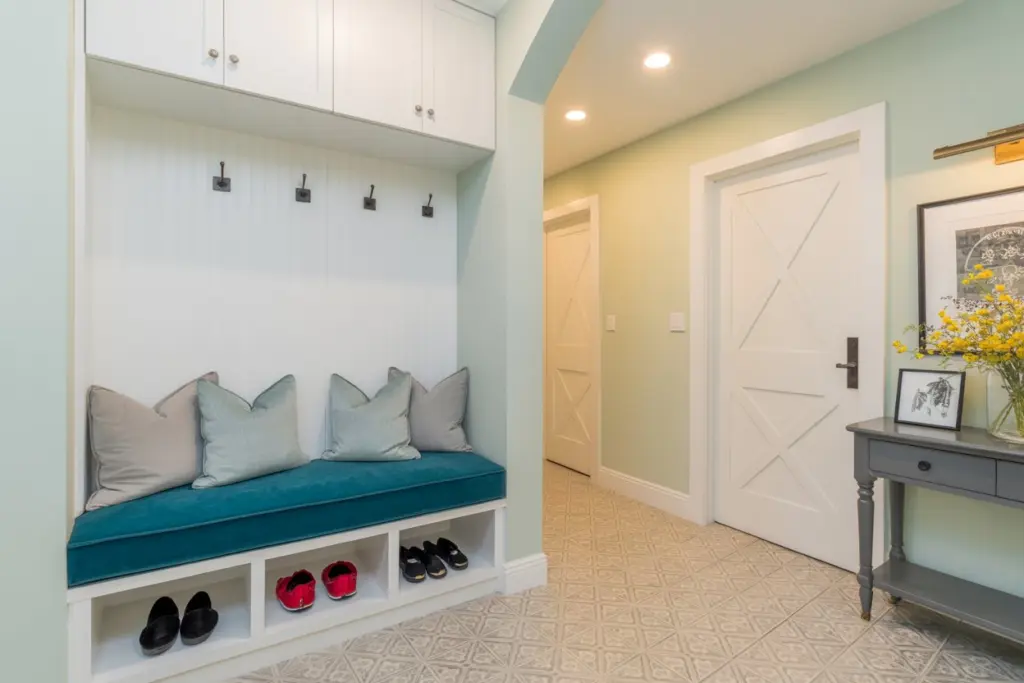
Tips for Organizing Your Mudroom
- Regular Maintenance: Make it a habit to tidy up your mudroom daily. Encourage family members to do the same.
- Seasonal Rotation: Rotate items based on the season. Store off-season gear to keep the mudroom clutter-free.
- Labeling: Label storage containers and baskets to make it easier for everyone to find what they need.
- Cleaning Supplies: Keep cleaning supplies handy for quick cleanup of muddy footprints or spills.
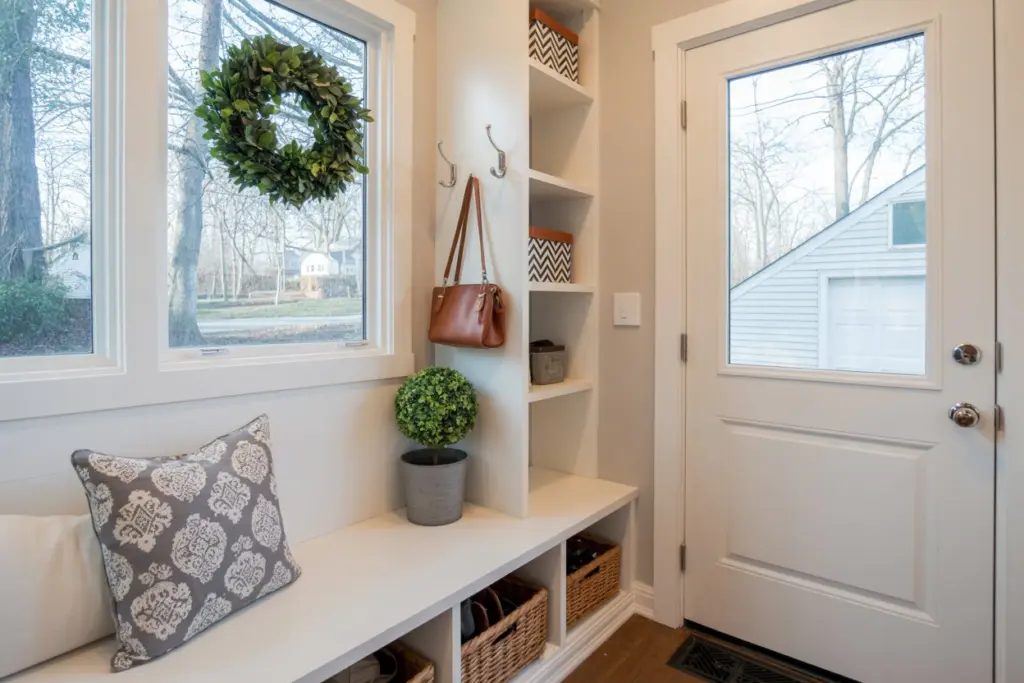
Maintenance and Cleaning
Maintaining your mudroom is relatively simple:
- Daily Cleaning: Sweep or vacuum the floor and wipe down surfaces as needed.
- Weekly Tasks: Launder any dirty rugs, and check for any items that need cleaning or repair.
- Seasonal Overhaul: Declutter and reorganize the mudroom with the changing seasons.
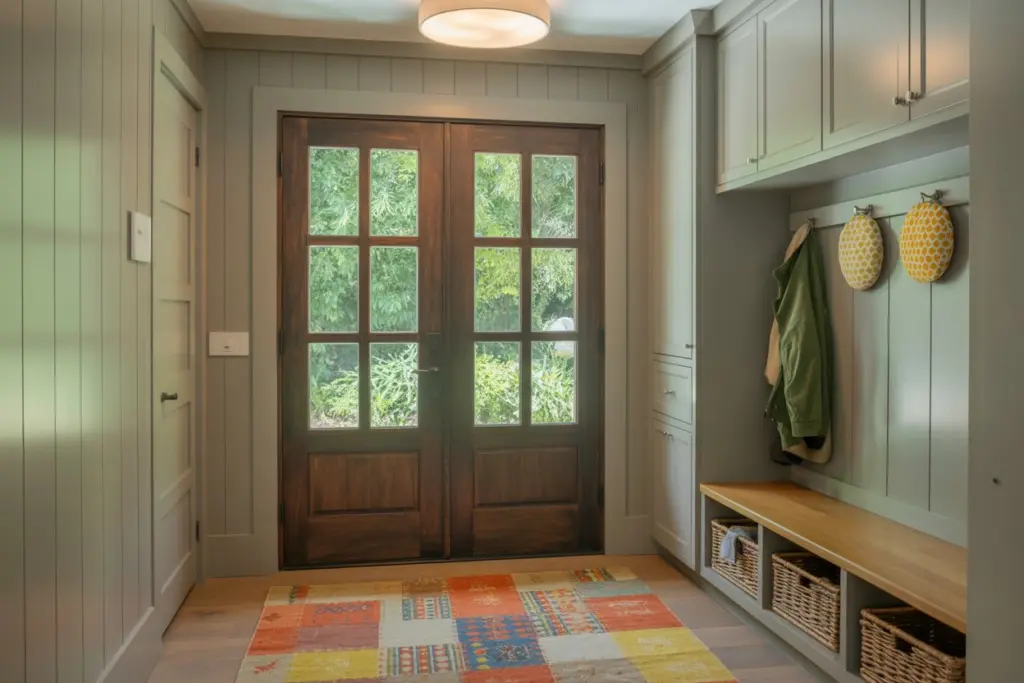
Mudrooms may not be the most glamorous part of your home, but they play a vital role in keeping your space clean and organized. With the right design and organization, your mudroom can become a stylish and functional space that welcomes you home while keeping the mess out.
FAQs
How can I make the most of a small mudroom?
Maximize vertical space with wall-mounted storage solutions and choose multifunctional furniture like benches with hidden storage.
What’s the best flooring for a mudroom?
Durable and water-resistant flooring options like porcelain tiles, luxury vinyl, or stone are ideal for mudrooms.
Can I turn my hallway into a mudroom?
Absolutely! Hallways can be transformed into mudrooms with the right storage and organization solutions.
How can I add a touch of style to my mudroom?
Incorporate decorative elements like colorful cushions, artwork, and plants to infuse style into your mudroom design.
What is a mudroom?
A mudroom is an entryway or transitional space in a house designed for removing and storing outdoor clothing, footwear, and wet or muddy items before entering the main living area.
What should be in a mudroom?
A mudroom typically includes storage solutions like shelves, hooks, cubbies, benches, and often a sink for washing up.
Why is it called a mudroom?
It’s called a mudroom because historically, it was a place to remove muddy boots and clothing to keep the rest of the house clean.
Are mudrooms only for cold climates?
No, mudrooms are useful in any climate. They’re handy for keeping your home clean and organized year-round.
Is a mudroom a laundry room?
A mudroom is not necessarily a laundry room, although some homes may combine the two functions. A mudroom primarily focuses on storing outdoor gear and keeping the home clean, while a laundry room is specifically for washing and drying clothes.
What’s the ideal color scheme for a mudroom?
Opt for light, neutral colors to create a clean and airy feel. You can add pops of color through decor and accessories.
How do I keep my mudroom organized year-round?
Regularly declutter, assign specific spaces for each item, and create a routine for tidying up.
What flooring material is best for a mudroom?
Choose flooring materials that are easy to clean, durable, and resistant to moisture, like tile, vinyl, or laminate.
